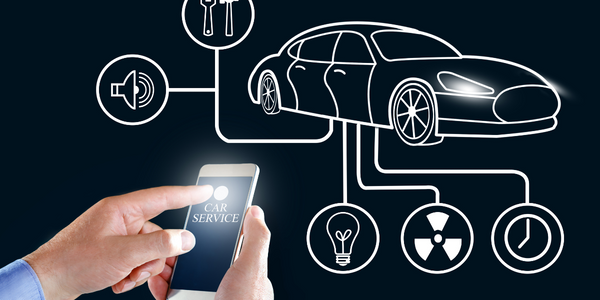Customer Company Size
Large Corporate
Region
- Asia
Country
- Japan
Product
- Cognito Detect
- Cognito Detect for Office 365
Tech Stack
- AI-based network detection and response (NDR)
- Machine Learning
Implementation Scale
- Enterprise-wide Deployment
Impact Metrics
- Cost Savings
- Digital Expertise
- Productivity Improvements
Technology Category
- Analytics & Modeling - Machine Learning
Applicable Functions
- Business Operation
Use Cases
- Cybersecurity
- Intrusion Detection Systems
Services
- Cybersecurity Services
About The Customer
Nissho Electronics Corp. is a company based in Japan that is dedicated to making cutting-edge U.S. technology available to enterprise organizations in the country. The company partners and invests in early-stage startups like Vectra that develop innovative new technologies and disruptive business models. Nissho Electronics Corp. offers a range of products and services, including security products and services. The company is committed to providing its customers with the latest and most effective technology solutions to help them stay ahead in the rapidly evolving digital landscape. Nissho Electronics Corp. is an early adopter of new technologies and is always on the lookout for innovative solutions that can enhance its offerings and provide greater value to its customers.
The Challenge
Nissho Electronics Corp., a company that makes cutting-edge U.S. technology available to enterprise organizations in Japan, was facing growing concerns about its own network and cloud security posture due to the rise in advanced cyberattacks. These hidden threats easily evade firewalls, IDS and other legacy security systems and spread inside networks in search of assets to steal. Nissho had used its SIEM to analyze firewall logs, which was a manual, time-consuming operation. The company was also concerned about the recent spike in credential abuse and account takeovers in SaaS-based Microsoft Office 365, which affects more than 30% of organizations each month. Attackers use social engineering to exploit human behavior, elevate account privileges and steal critical business-data. The company understood that it needed visibility inside the network and public cloud to identify and stop hidden cyberattackers who move laterally in traffic to spy, spread and steal.
The Solution
To combat these response and cloud security challenges, Nissho became an early adopter of Cognito Detect™ from Vectra®. Cognito Detect leverages AI to instantly identify and stop cyberattackers in cloud and data center workloads, SaaS offerings like Microsoft Office 365, and user and IoT devices. By automating threat detections, prioritization, and other manual Tier-1 and Tier-2 security tasks, Cognito Detect significantly reduced the security operations workload at Nissho. And its compliance reporting capabilities ensure that top management is always up to date on business risk as it relates to cybersecurity. To speed up AI-assisted threat hunting and incident investigations, Cognito Detect collects relevant logs and metadata from all network traffic. The collected metadata is then enriched with deep security insights and detailed context about each attack, including all compromised users, accounts, devices, and whether the attack is part of a larger campaign. To stop account takeovers, Nissho is planning to deploy Cognito Detect for Office 365 from Vectra, which ingests activity logs from multiple Office 365 SaaS services like Microsoft Azure Active Directory, Teams, Outlook, SharePoint, OneDrive, and Exchange.
Operational Impact

Case Study missing?
Start adding your own!
Register with your work email and create a new case study profile for your business.
Related Case Studies.

Case Study
Protecting a Stadium from Hazardous Materials Using IoT2cell's Mobility Platform
There was a need for higher security at the AT&T Stadium during the NFL draft. There was a need to ensure that nuclear radiation material was not smuggled inside the stadium. Hazmat materials could often be missed in a standard checkpoint when gaining entry into a stadium.

Case Study
Enel Secures Italian Power Generation Network
Electric energy operators around the world are working to increase the reliability and cyber resiliency of their systems. This includes Enel, a global power company that manages and monitors the Italian power grid. This grid:• Serves 31 million customers• Has a net installed energy capacity exceeding 31 gigawatts• Includes more than 500 power generation plants,including hydroelectric, thermoelectric, and wind• Is managed and monitored by Enel 24/7/365• Is operated by Terna, the Italian Transmission System Operator (TSO)Enel is responsible for the availability of the grid’s underlying ICS and industrial network. It also manages Regional Control Centers and Interconnection Centers which connect with the TSO. The TSO manages the flow of energy to the grid plus controls and remotely regulates the power generation of power plants, increasing and decreasing power production as required. The complex system of interaction and cooperation between Enel and the TSO has strong security implications as well as operational and business challenges.

Case Study
Securing the Connected Car Ecosystem
In-vehicle communications and entertainment system hosts high-value or sensitive applications. API libraries facilitate communication and sharing of vehicle data. These API libraries are vulnerable to reverse engineering and tampering attacks and may even result in loss of passenger safety. Attackers can inject malware that may be able to migrate to other in-car networks such as the controller-area-network (CAN) bus which links to the vehicle’s critical systems. Software provided for dealers to interface with cars through the OBD2 port is vulnerable to reverse engineering and tampering attacks. Hackers may be able to abuse these tools to inject malicious code into the ECUs and CAN bus. Attackers can lift the cryptographic keys used, and use that to build their own rogue apps/software. Their cloned version of the original app/software may have altered functionality, and may intend to gain access to other in-car networks.

Case Study
Secure and Cloud-based Data Marketplace
The great promise of new connected concepts of industry like 'Industry 4.0' is their ability to deliver a historically unparalleled level of responsiveness and flexibility. While modern supply chains are already heavily integrated and designed to be fluid and fast moving, a large swathe of manufacturing still remains beholden to economies of scale, large production runs, and careful preplanning.The Industrial Internet of Things (IIoT) is set to change this by allowing small-batch or even custom manufacturing on a truly industrial scale. With machines whose functions are not set in stone, but flexible and determined by their operating software and with a new form of connectivity bringing industrial engineers, product manufacturers, and end users closer together than ever before. Ad-hoc adjustments to automotive parts, for example, during active product runs or the bespoke manufacturing of custom sneakers become very viable options indeed.Much of this remains a theoretical vision, but IUNO, the German national reference project for IT security in Industry 4.0 demonstrates the new capabilities in action with a secure technology data marketplace running a smart drinks mixer.

Case Study
Expedia Hosted by 2lemetry Through AWS
Expedia is committed to continuous innovation, technology, and platform improvements to create a great experience for its customers. The Expedia Worldwide Engineering (EWE) organization supports all websites under the Expedia brand. Expedia began using Amazon Web Services (AWS) in 2010 to launch Expedia Suggest Service (ESS), a typeahead suggestion service that helps customers enter travel, search, and location information correctly. According to the company’s metrics, an error page is the main reason for site abandonment. Expedia wanted global users to find what they were looking for quickly and without errors. At the time, Expedia operated all its services from data centers in Chandler, AZ. The engineering team realized that they had to run ESS in locations physically close to customers to enable a quick and responsive service with minimal network latency.
.png)
Case Study
OTA Software Updates for Smart Energy (gridX)
gridX has a requirement for over-the-air software updates for their gridBox devices and used the Yocto Project for their builds. The driver for the requirement was having the ability to quickly support new features, as well as deploying bug fixed and path known security vulnerabilities. New software updates with a US stick manually to all gridBox devices in the field would be prohibitively expensive and labor-intensive.







